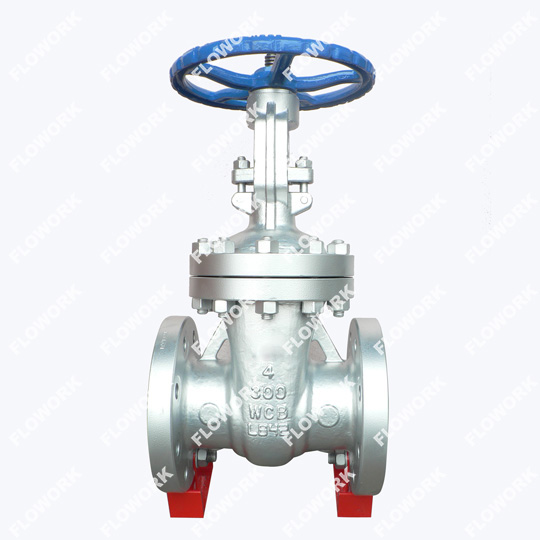
1、You are in restricted area and need password. Please Contact us to obtain documents.
2、PasswordIf you have any questions about quotation or cooperation, please feel free to send us inquiry. Inquiry us
| Size: | 2"-68" |
| Pressure: | 150LB-2500LB |
| Body Material: | WCB, WC6, WC9, CF8, CF8M, CF3, CF3M, CN7M, LC1, LC2, LC3, LCB, LCC, Monel, 20# Alloys, 4A, 5A, C95800, C95500, A105, F304, F304L, F316, F316L, LF1, LF2, LF3, LF9, F51, F53, F11, F22, etc. |
| Seal Material: | STELLITE, 13Cr, SS304, SS316, etc. |
| Connection Type: | Flanged, Butt Welded, Socket Welded, NPT |
| Operation: | Handwheel, gear operated, pneumatic, motorized |
| Face to Face Dimension: | ASME B16.10 |
| Flange End Dimension: | ASME B16.5 |
| Butt Welded Dimension: | ASME B16.25 |
| Design and Manufacture: | API 600 |
| Test Standard: | API 598,API624, API 624, API 6FA, ISO 15848-1-2 |
Certified to industrial fugitive emissions standard ISO 15848-1 and API 624
Low emission packing, zero leakage, high sealing performance
Bi-directional, flow direction is not restricted
Low friction and abrasion between sealing surface, excellent sealing performance
Short structure length, compact structure, good rigidity
Applicable to toxic, flammable, and explosive media
To tighten the packing on a gate valve, follow these steps:
Turn off the valve: Before you start tightening the packing, turn off the valve and make sure there is no pressure in the line, gate valve manufacture.
Remove the packing nut: Use a wrench to remove the packing nut from the valve stem. The packing nut is located just below the handle.
Tighten the packing: Use a packing wrench or pliers to tighten the packing around the valve stem. Make sure not to over-tighten as this can cause damage, ball valve manufacture.
Replace the packing nut: Once the packing is tightened, replace the packing nut and use the wrench to tighten it. Again, be careful not to over-tighten.
Test the valve: Turn the valve back on and check for any leaks. If there are no leaks, the valve is good to go.
A gate valve may leak due to various reasons. Some of the common causes are:
Wear and Tear - Over time, the parts of the valve can become worn, corroded or damaged. This can lead to leaks at the packing or sealing surfaces.
Improper Installation - If the valve is not installed correctly, it can cause leaks. A gate valve should be installed in a way that its stem is vertical, so that it can function properly.
High Pressure - Gate valves are designed to withstand high pressure, but if the pressure exceeds its capacity, it can cause leaks, bronze valve.
Temperature Changes - Extreme temperature changes can cause the valve body or other components to expand or contract, leading to leaks.
Foreign material - Dirt and debris can accumulate in the valve over time, causing it to malfunction and leak.
Faulty Manufacturing - In some cases, the valve may have been manufactured with defects, which can cause it to leak.
A through conduit gate valve is a type of valve used to control the flow of fluids, such as oil or gas, in pipelines. It has a parallel gate that moves up and down perpendicular to the direction of the fluid flow to open and close the passage, api 6d ball valve.
Unlike traditional gate valves, which have internal seats that obstruct the flow when fully opened, a through conduit gate valve has no seats, allowing for full bore opening and unobstructed flow. This design enables it to reduce turbulence, pressure drop, and erosion of the pipeline system.
Through conduit gate valves are commonly used in oil and gas pipelines, as well as in other industries that require high-pressure and high-temperature applications. They are also known for their reliability, durability, and low maintenance requirements, forged ball valve.
Gate valves are designed to be fully open or fully closed. They are not intended to be partially open because doing so can lead to a number of problems.
One of the main reasons why gate valves cannot be partially opened is due to their design. Gate valves have a flat gate that moves perpendicular to the direction of flow, and when fully opened, this gate is completely out of the way, allowing unimpeded flow. When the valve is partially opened, the edge of the gate obstructs the flow, causing turbulence and pressure drop, which can result in damage to the system or reduced efficiency, carbon steel gate valves.
Another reason why gate valves should not be partially opened is that it can lead to seal damage. When the valve is partially opened, the gate is only partially seated, causing the seals to become misaligned and wear unevenly. Over time, this can lead to leaks and other problems.
Gate valves can fail for various reasons, some of the common ones are:
Sediment Build-up: Over time, sediments and deposits such as rust, sand, or minerals can accumulate in the valve and cause blockages, making it difficult or impossible to open or close the valve, high temperature gate valves.
Corrosion: The metal components of the valve may corrode due to exposure to chemicals, moisture, or other environmental factors, which can weaken the structure and lead to leaks or failure.
Wear and Tear: Constant use, high pressure, and harsh conditions can cause the valve's internal components to wear out, leading to leaks or complete failure.
Improper Installation: If the valve is not installed correctly or if the wrong materials or components are used, it can result in issues such as leaks, malfunctions, or premature failure.
Mechanical Issues: Sometimes, there can be manufacturing defects or issues with the valve's design that can lead to failure.
Send us a message if you have any questions or request a quote.

A reply from our experts within 24 hours

The latest detailed product catalugue

One-stop service for your project